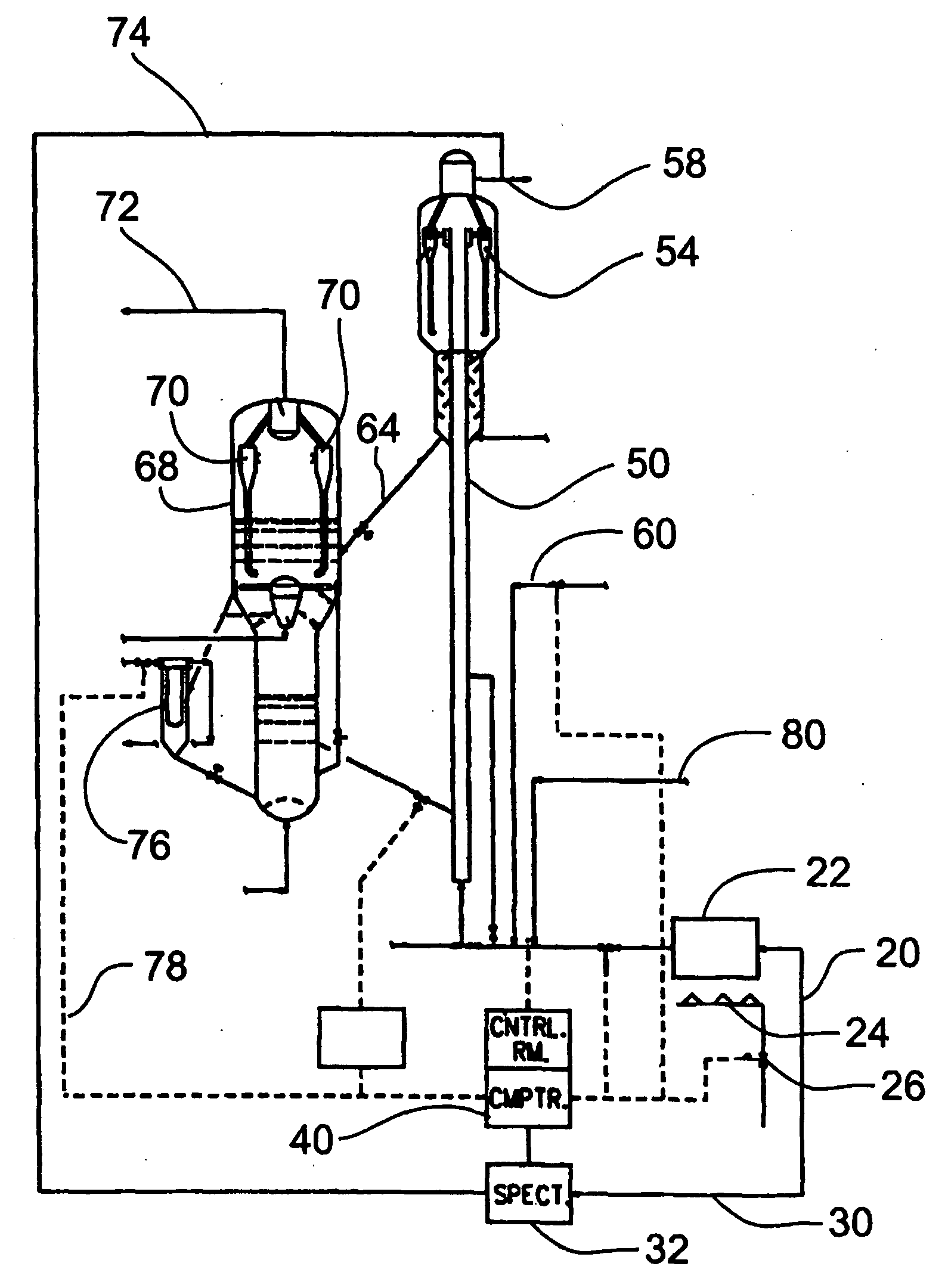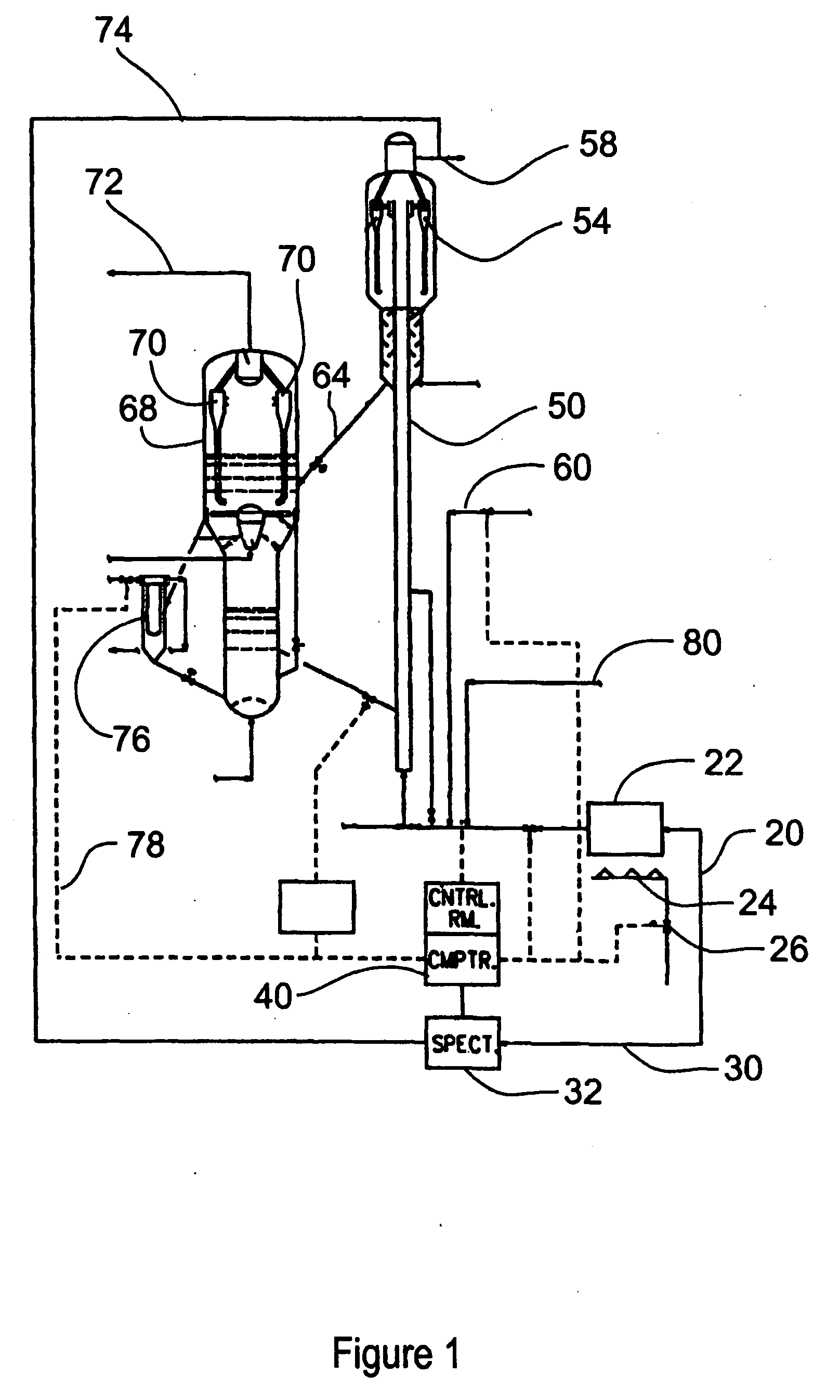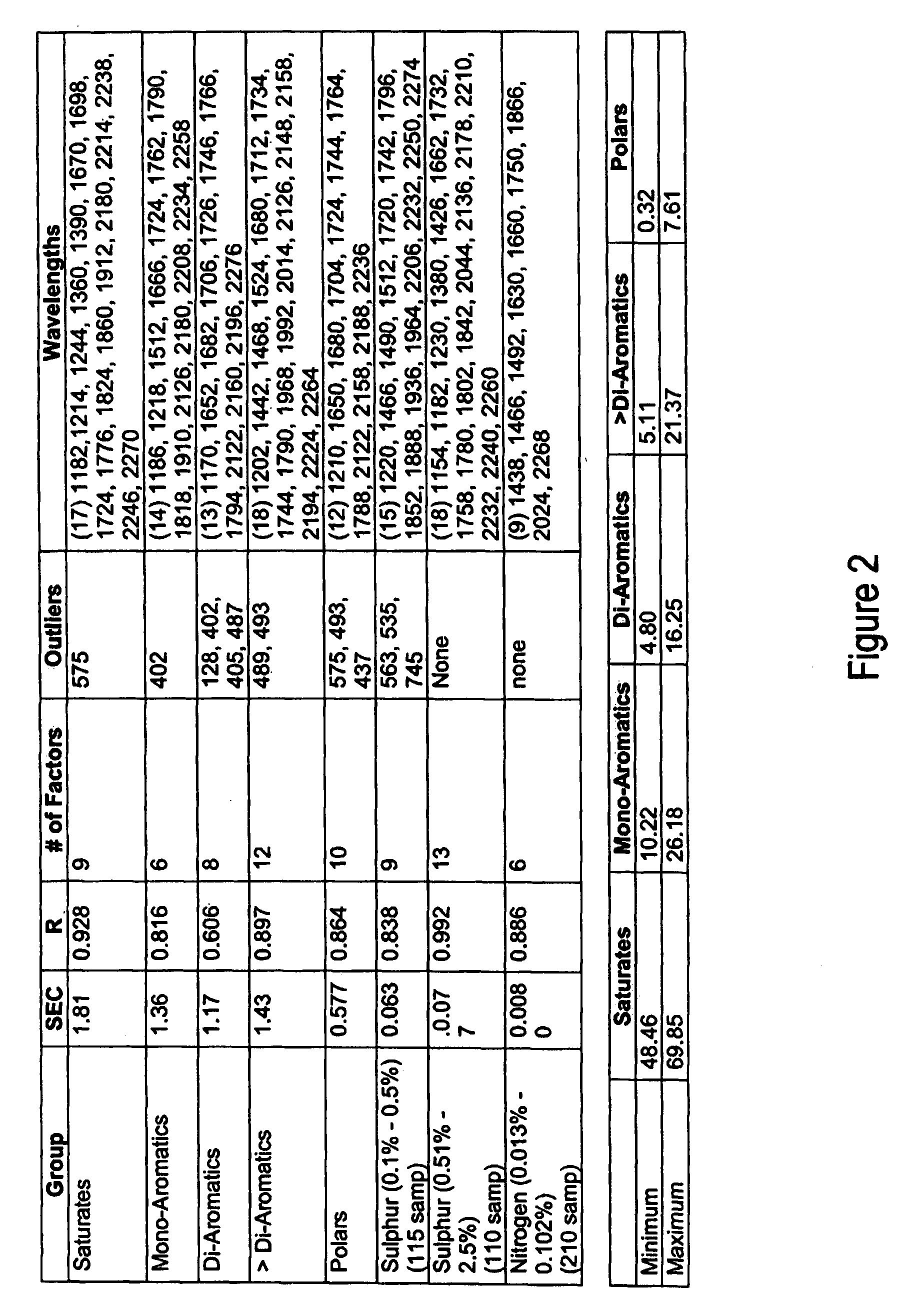Method for monitoring feeds to catalytic cracking units by near-infrared spectroscopy
a catalytic cracking unit and near-infrared spectroscopy technology, applied in the direction of instruments, material analysis, biological material analysis, etc., can solve the problems of time-consuming and labor-intensive analytical techniques for characterizing fcc feeds, and achieve the effect of monitoring the quality of fcc feed stocks more quickly and efficiently
- Summary
- Abstract
- Description
- Claims
- Application Information
AI Technical Summary
Benefits of technology
Problems solved by technology
Method used
Image
Examples
example 1
[0047]FIG. 2 is a Table which shows samples, including hydrotreater charges and products and FCC feeds used to control weight percents of each hydrocarbon class.
[0048]Two hundred fifty samples, including hydrotreater charges and products and FCC feeds were used to create a PLS model for predicting weight percents of each hydrocarbon class. The samples were analyzed using the online NIR. Wavelengths were chosen for each group and a summary appears in FIG. 2.
example 2
[0049]FIG. 3 is a plot that illustrates HDS vs. AS mode differences. The plot shows FCC feed sulfur under different operating philosophies. The feed sulfur is held constant and aromatics, nitrogen or concarbon parameters are varied.
example 3
[0050]FIG. 4 is a graph of a catalyst cycle life curve. A critical aspect of managing the CFH is catalyst cycle life. Coke and metals are deposited on the catalyst during the course of the run cycle. This deactivation requires an increase in temperature. End of Run is typically determined when the process is at its maximum inlet temperature capability. At this point the catalyst will need to be changed out with fresh. Monitoring the CFH feed properties will ensure the unit is managed to achieve the desired cycle length and avoid an upset condition where poor feed quality is sent to the unit. This ability to monitor feed provides for greater flexibility and minimizes risk for increased deactivation and catalyst damage. FIG. 4 is a typical catalyst cycle life curve showing the impact of a feed upset. In this case the upset was caused by a leaking heat exchanger. Application of the NIR for on-line feed monitoring would allow better unit monitoring to minimize the risk of this type of u...
PUM
| Property | Measurement | Unit |
|---|---|---|
| wavelengths | aaaaa | aaaaa |
| wavelengths | aaaaa | aaaaa |
| wavelengths | aaaaa | aaaaa |
Abstract
Description
Claims
Application Information
 Login to View More
Login to View More - R&D
- Intellectual Property
- Life Sciences
- Materials
- Tech Scout
- Unparalleled Data Quality
- Higher Quality Content
- 60% Fewer Hallucinations
Browse by: Latest US Patents, China's latest patents, Technical Efficacy Thesaurus, Application Domain, Technology Topic, Popular Technical Reports.
© 2025 PatSnap. All rights reserved.Legal|Privacy policy|Modern Slavery Act Transparency Statement|Sitemap|About US| Contact US: help@patsnap.com



